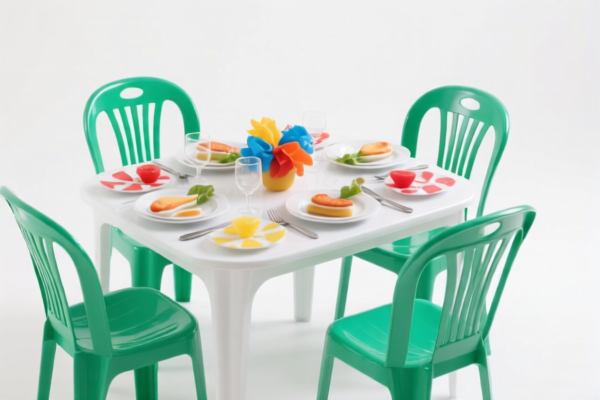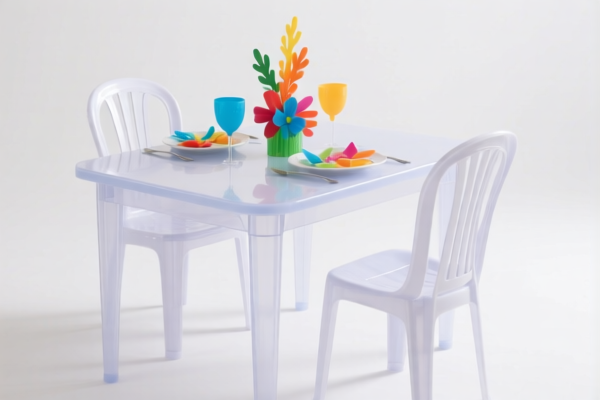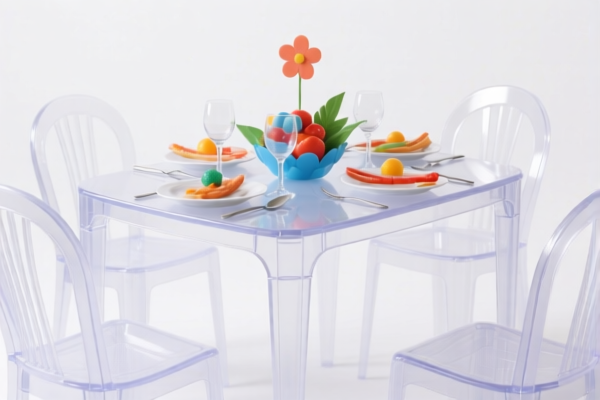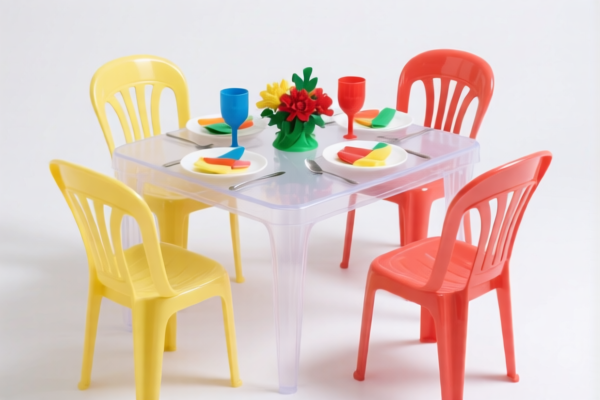| HS Code | Official Doc | Tariff Rate | Origin | Destination | Effective Date |
|---|---|---|---|---|---|
| 8304000000 | Doc | 33.9% | CN | US | 2025-05-12 |
| 9403704015 | Doc | 55.0% | CN | US | 2025-05-12 |
| 9403704031 | Doc | 55.0% | CN | US | 2025-05-12 |
| 6304996020 | Doc | 33.2% | CN | US | 2025-05-12 |
| 6304996040 | Doc | 33.2% | CN | US | 2025-05-12 |
| 3924104000 | Doc | 33.4% | CN | US | 2025-05-12 |
| 3924905650 | Doc | 40.9% | CN | US | 2025-05-12 |
| 3926901000 | Doc | 40.9% | CN | US | 2025-05-12 |
| 3926909989 | Doc | 42.8% | CN | US | 2025-05-12 |
| 4823908000 | Doc | 55.0% | CN | US | 2025-05-12 |
| 4823904000 | Doc | 55.0% | CN | US | 2025-05-12 |
| 6702102000 | Doc | 38.4% | CN | US | 2025-05-12 |
| 6702104000 | Doc | 33.4% | CN | US | 2025-05-12 |




Plastic Table Arrangement
Plastic table arrangements encompass decorative displays constructed primarily from plastic materials, used to adorn tables for various occasions and purposes. They represent a versatile and often cost-effective alternative to natural floral arrangements or other table centerpieces.
Materials
The core material is plastic, commonly including:
- Polyethylene (PE): Frequently used for leaves and some flower petals due to its flexibility and low cost.
- Polypropylene (PP): Offers greater rigidity and is used for stems, bases, and more durable flower components.
- Polystyrene (PS): Can be found in decorative accents and bases, though less common due to fragility.
- Acrylic: Used for more upscale arrangements, providing a glass-like appearance.
- Foam (Polyurethane): Often used as a base to hold stems in place, providing structure and allowing for water retention in some designs.
Purpose
The primary purpose is aesthetic enhancement of tables. Specific uses include:
- Event Decoration: Weddings, birthdays, corporate events, parties, and holidays.
- Home Decor: Centerpieces for dining tables, coffee tables, side tables, or mantels.
- Commercial Displays: Restaurant tables, hotel lobbies, retail displays.
- Temporary Decoration: Situations where longevity is not required, or frequent changes in arrangement are anticipated.
Function
Plastic table arrangements function as visual focal points. They contribute to the overall ambiance of a space and can:
- Add Color & Texture: A wide range of colors and styles are available.
- Create a Theme: Arrangements can be designed to match specific event themes or color schemes.
- Provide a Low-Maintenance Option: Unlike fresh flowers, plastic arrangements require no watering, pruning, or replacement.
- Offer Durability: Resistant to wilting, breakage (compared to glass), and some weather conditions.
Usage Scenarios
- Indoor Events: Weddings, banquets, conferences, parties.
- Outdoor Events: Picnics, garden parties (depending on material quality and weather).
- Residential Settings: Dining rooms, living rooms, kitchens, bedrooms.
- Commercial Spaces: Restaurants, hotels, offices, retail stores.
- Temporary Displays: Trade shows, promotional events.
Common Types
- Floral Arrangements: Imitations of natural flowers, often roses, lilies, orchids, and hydrangeas. These can range from realistic to highly stylized.
- Greenery Arrangements: Focus on plastic leaves and vines, often used to create a lush, natural look.
- Fruit Arrangements: Realistic plastic fruits arranged in bowls or baskets.
- Themed Arrangements: Designs incorporating specific objects or characters (e.g., holiday-themed, nautical, etc.).
- Centerpieces with Accents: Arrangements combined with candles, beads, ribbons, or other decorative elements.
- Floating Arrangements: Plastic flowers or greenery arranged in water-filled containers.
- Artificial Bonsai: Miniature plastic trees styled to resemble bonsai.
Based on the provided information, “plastic table arrangement” can be classified under the following HS codes:
- 3924104000: This HS code falls under Chapter 39: Plastics and articles thereof. Specifically, it covers Tableware and kitchenware: Other. This would include plastic items used for serving or displaying food on a table.
- 3924905650: Also within Chapter 39: Plastics and articles thereof, this code covers Other: Other. This is a broader category for plastic household articles, potentially encompassing decorative table arrangements. The base tariff is 3.4%, with an additional 7.5% surcharge, totaling 40.9%.
- 6702102000: This HS code is under Chapter 67: Artificial flowers, foliage and fruit and parts thereof; articles made of artificial flowers, foliage or fruit. It specifically covers Of plastics: Assembled by binding with flexible materials such as wire, paper, textile materials, or foil, or by gluing or by similar methods. This applies if the arrangement is constructed using plastic flowers, leaves, or fruit and held together with binding materials. The base tariff is 8.4%.
- 6702104000: Still within Chapter 67: Artificial flowers, foliage and fruit and parts thereof; articles made of artificial flowers, foliage or fruit, this code covers Of plastics: Other, including parts. This is a more general category for plastic artificial flower arrangements. The base tariff is 3.4%.
Regarding HS code 6702102000 and 6702104000, please note that these codes relate to artificial flowers, foliage, and fruit made of plastic. If the arrangement consists of plastic components that are not specifically flowers, foliage, or fruit, HS codes 3924104000 or 3924905650 may be more appropriate.
Customer Reviews
No reviews yet.